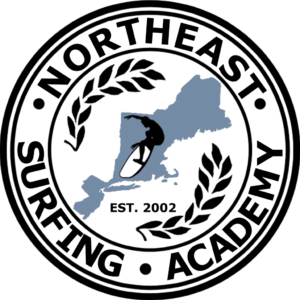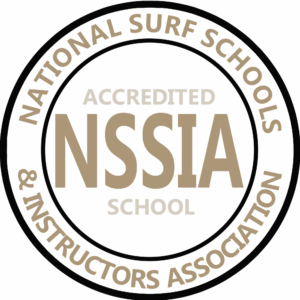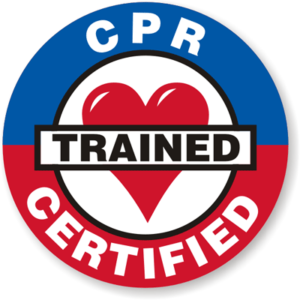
Selecting – Buying Surfboards
Welcome To Your First Step In Surfing or Paddleboarding: Buying THE WRONG SURFBOARD is the biggest mistake you will ever make. You won’t learn how to surf and continue to blame yourself. YOU WILL NOT blame the board, simply you will think you just suck at surfing. When in most cases you will just be on the wrong equipment. All surfboards and paddleboards have weight limits. Selecting the right equipment in any outdoor sports is key to learning the right way. Selecting the right conditions to learn in is just as important. Surf Shops will sell you whats best for you, BUT what’s best for you on the self. Shops are great places to look, touch and feel surfboards. Ask the owners how long they been surfing? In most cases maybe 20 to 40 years will be the answers. Surf School teach hundreds to thousands of beginners a year. We know beginners, we teach beginners, and Northeast Surfing only offers certified Surf Instructors. Working with beginners every day, we understand what they need. BIGGER IS BETTER. IT’S ALL ABOUT the learning curve.
Ask yourself these questions.
- What type of wave will you be surfing? (round waves big boards) (steep waves short board)
- What part of the country will you be surfing? (constant waves? Fair waves? Not many waves?)
- How much do you weight? (bigger frame longboards) (smaller frames shorter boards)
- What is your surfing ability level? (beginner longboards) (more advance surfers shorter boards)
- How much will you be surfing? (all year round less learning curves) (summer only more learning curve)
Are you a Beginner: You have never tried surfing or maybe have gone just a few times. You want to really learn how to ride waves and start out on the right foot.
Are you an Intermediate: You are comfortable in the water riding and catching waves and you want to explore your options.
Are you Advanced: You know who you are, no need for this guide as you know what you need! Go ahead, Go Shred!
What is your weight? Weight is a very important factor in selecting a board. Smaller frame surfers can ride smaller boards even when learning to surf. Though you must take into consideration the other factors in this post. All boards have a height and weight limit. Don’t look at only boards length. Take into consideration the thickness and density. What is the boards weight limit? As you become a better surfer your ability will become stronger than your weight and your weight won’t really matter anymore. Your ability will be able to surf different size boards smaller and bigger.
Also What type of surf “waves” will you be riding with your surfboard? If your local break is a slower, mushier wave then boards like longboards and fish’s come in handy. If you want to try your hand at a steeper, more bowly wave than having a shortboard or smaller size board always helps as they fit the geometry of the steep wave face better. These boards need more drive and steeper waves create more drive. Just remember it’s no fun to grovel in 2′ slop on a board that’s way too small for you. Maximize your fun and pick the correct board for the type of waves you will use it in. Board size is everything. In the Northeast we have short board breaks, but most surfers surf longboard breaks. We have more of a wave that slopes then are steep. Short boards need steep waves with more drive. Longboards are great for rounder waves.
Volume – Selecting a good beginner board has a lot to do with making sure it has plenty of volume. Lots of volume in a board makes it float better and for someone learning it makes it easier to get to your feet and catch waves. A mistake many people make when buying their first surfboard is not getting one with enough volume. Foam boards, longboards, have lots of volume. Fish surfboards and shortboards usually less. Volume can be measured in thickness and length, reason most beginners learn how to surf on longboards.
Adults Buying: The four popular types of surfboards are fiber Glass, Epoxy, Foam and Plastic shell (read below.) All usually have a foam core but the shell decides the shape and performance of the boards. Traditional surfboards made of fiberglass have been popular for a long time. However, epoxy surfboards have a few advantages when compared to the fiberglass variety. Some of these advantages include durability, weight, handling, and water absorption. This article will discuss some of the advantages of epoxy surfboards. We are not a fan of adults owning soft-tops. Reason why? Adults can/will surf more than children. So they will outgrow the soft-top with their ability very fast. In any outdoor sport, skiing, snowboarding and surfing, beginner gear can always hold you back if you on it too long.
Buying for a Child: If you buy a 7’9 or 7’3 for kids of average height and weight under 14 years old. For 15 and over I would recommend a 9’0. If you buy a child an 8’0 they could surf it until around 15 or 16 years old. Then would want a 9’0 for the Northeast waves. For names BIC, NSP, are great beginner boards for kids or some adults. Walden Magic 9’0 are great for ages 15 or 16 and over most people would surf the 9’0. You can choose fiber Glass or Epoxy. This board is great if you are learning try to pick a beginner to intermediate board. Or you can go with a NSP board they sell them at Nor’easter Surf Shop in Scituate (NOT affiliated) MA. NSP is another good beginner board as well.
Surfboards –
For the shell you have a few options, fiber Glass, Epoxy, Foam, and Plastic shell. All usually have a foam core but the shell decides the shape and performance of the boards. Traditional surfboards made of fiberglass have been popular for a long time. However, epoxy surfboards have a few advantages when compared to the fiberglass variety. Some of these advantages include durability, weight, handling, and water absorption. This article will discuss some of the advantages of epoxy surfboards.
Type of Surfboards – The four most common types of surfboards is, fiberglass, Epoxy, Plastic, and soft-tops. Fiberglass is hard for children to care for or for beginners to get use to. It is like walking around with glass. Epoxy is more durable and are a nice second option to fiberglass. Whats the difference? The fiberglass flexes in the waves something that you won’t notice for a few years in some cases many years to come. Fiberglass is always the nicer options of the two but Expoxy is known to have more float and if you drop it, it won’t break as much as a fiberglass board. Soft-tops are great for children but are designed to go straight not really surf the wave. Children will out grow this board fast and we do not recommend soft-tops for adults. Some board companies make a plastic shell board, these are really hard to kill, very durable, and have lots of float, they are also very affordable.
Epoxy Benefits: One of the first advantages of epoxy surfboards is their durability. The coating of fiberglass boards is very susceptible to erosion. These boards are also prone to cracking. Epoxy surfboards are much stronger than the fiberglass variety, so they will last a lot longer. They also aren’t as susceptible to dings like the fiberglass boards. One of the biggest advantages of epoxy surfboards is their weight. Most fiberglass board weigh at least 30 pounds, while some weigh much more than that. Epoxy is a stronger material, so the core of the board can be made of lighter materials. Therefore, epoxy surfboards will weigh less than the fiberglass variety. This lighter weight also enables them to have better buoyancy characteristics. Another advantage of epoxy surfboards is their handling. As mentioned earlier, these boards are lighter and will float better. This enables you to handle epoxy surfboards better than you can handle fiberglass boards. Their better handling capabilities make them perfectly suited for people who are just learning how to surf.
Fiber Glass Benefits: They give a smooth even ride with a predictable response to wave patterns. They are heavier than say epoxy boards to carry but very nice to glide on a wave. Fiber Glass also flex on the wave and allows for a more high performance ride fast turning and you feel closer to the waves. Better surfers enjoy these type boards for a better ride. Very east to ding and beak it is glass but can be repaired. I do not recommend for kids under 15 years old.
BIC Surfboards Plastic shell: One of the first advantages of BIC surfboards is their durability. BIC has far better designs, and the master shapes were designed by some great shapers, like peter pan. Unfortunately, they are machine made, more like boats than surfboards have completely paradoxical riding characteristics. They are easy to ride and great for beginners or advance surfers. They have some limited they are a stiff boards and do no flex on bigger swell. But anyone can surf a BIC. Also they are great for kids and very hard to hurt them.
Foam Surfboards: Easy to ride and wont hurt like a plastic board if you get hit with it. But will wear down fast over time and is designed to surf straight into the beach not good for turning. Beginner only board. Safe for learning and great for kids. BIC cost between 300.00 and 500.00 for most surfboards, NSP is around 500.00 to 700.00, Fiber Glass like the Walden Magic starts at 700.00,
Buying At The surf shop – Some Surf shops will give you objective advice, or sell you whats on the shelf, other shops will sell you a board that they want to sell that will get them more sales, or even worse, you might end up talking to someone that may not know very much about surfing at all. Northeast Surfing works with over 100 surf shops in the Northeast, USA, and our company does not sell surfboards, so our board professionals will point you in the right direction, because at the end of the day you experience with our company is whats most important to us.
The bigger the board the easier to learn how to surf? “Not All The Time” – The thickness will determine how well the board will float. The more it floats the easier it is to paddle and paddle into waves. The wider and longer it is, the more stable it will be when you get up. However, bigger is not necessarily always better if you are looking for something more maneuverable and easier to turn. Once you learn how to ride the face of the wave. It’s all up to you. We will start by introducing and explaining the different types of surfboard shapes we offer and their characteristics. These shapes include the Fish, Shortboard, Funshape, Mini-Longboard, and Longboard.
Your budget – Budgetis another thing to consider when buying a new surfboard. For children who are growing you have to decide if you want to buy one board to last them 6 years or one board that they will outgrow in 2 years. For adults the same applies, you can find more of an intermediate board that will last you 8 years plus of taken care of, or buy a beginner board that will only last a few years. As you get better you will outgrow a beginner board. The beginner board will be easier to learn on but again you will out grow it. Stay away from advanced surfboards no matter the style.
A longboard – is any surfboard 9 feet or longer, a fun board is any surfboard 7 to 8 feet long, and shortboard is any surfboard 7 feet or under. Again in the northeast most surfers surf longboards because of the common shape of the waves and the wave heights most of the time.
The Retro Quad Fish – Created in the 70s, the retro fish is typically shorter and thicker than a short board and comes with a swallow tail and a larger twin or quad fin set up. Its unique shape allows for a looser, faster board for speed on those smaller days. Great smaller alternative to a longboard. Or those who spend most sessions riding sloppy waves. Check out the retro quad fish here.
The Performance Shortboard – The shortboard surfboard is considered the most high performance of all the surfboard shapes. Its narrow and thin design give the experienced surfer the responsiveness needed for quick, snappy turns and the ability to surf the wave as they please. Not for the faint of heart and beginners should avoid this type of board until the basics are learned on a longer model.
The Funshape – Also known as a funboard surfboard. This board offers up the maneuverability of a short board and the ease of a long board. Its best of both worlds in a nice little package. If you are a beginner who is only going to have one board covering all your bases, this is the one.
The Mini Longboard – Perfect for the person who likes the feel of a longboard but doesn’t need all the extra foam of one. Easier to carry and manage out in the water but with all the surfing ease of a longboard. Great for kids and smaller adults or the experienced longboarder needing something more maneuverable. Mini longboards look and feel like a longboard are typically under 9ft.
The Classic Longboard – A modern replica of what the sport was started on, the classic longboard. Paddle into anything you want and hang ten all the way to the beach. Among the most popular boards in the water and for good reason, easy to start on and always fun.
The Performance Longboard – This is the slightly trimmed down version of the classic longboard. This performance longboard surfboard is designed with performance in mind rather than the extra buoyancy of the classic. A perfect board for the beginner looking to be a little more challenged. Or the expert ready to hang ten and hit the lip. Browse our fill line up of Surfboards Models here. Or check out our Surfboard Size and Weight Charts to get an idea of what models fit your weight.
Inspecting the Surfboard – When you are inspecting a surfboard for purchase make sure and look it over very closely for any nicks, scratches, dents, dings, compression marks, etc. Also check for any past damage to the board that may have been repaired. Is there any delamination? Was it a good repair job? Is there any damage to the foam and surrounding areas that occurred due to the damage? Make sure all of the wax is removed so you can see beneath it – unscrupulous characters have been known to cover their dings with wax gobs. Never buy a board in a rush, make sure the board comes with fins.
WETSUITS –
There are cheap wetsuits and normal priced wetsuits. You have children and adult suits. Of course children are always growing so there are NOT many parents that want to buy a wetsuit every few years for their children at real high prices. Adults are a lot easier sense most Adults are done growing. Though with wetsuits you get what you pay for. When buying an adult wetsuit keep in mind when you plan on using it? This is what we surfers usally do give or take a few weeks.
- January, February, March: Wetsuit 5mm or thicker w/hood, 7mm booties, 7mm Gloves. Recommended 6.5mm Wetsuit.
- April, May, and half of June: Wetsuit 4.3mm or thicker, 7mm booties.
- Half of June, July, August, September, first week of Oct (most years): Wetsuit 3.2mm or thicker only.
- Most of October, to Mid November: Wetsuit 4.3mm or thicker, 7mm booties, 3mm Gloves or thicker.
- Mid November, December: Wetsuit 4.3mm or thicker w/hood, 7mm Booties, 7mm Gloves. (some years 5mm or thicker wetsuit.
The Best Conditions To Learn in? You wouldn’t learn to ski or snowboard in a blizzard would you? You would practice mountain climbs in storms would you? So why did beginners select the wrong conditions to learn in? Because they just don’t know. So what is the best conditions to learn how to surf in. It the waves don’t scare you thats a start. Always surf within your ability level. Always feel comfortable in the surf zone. Select calm days with nice clean waves rolling in. Travel to surf but learn the areas you love. Stay away from onshore winds ands storm waves. Messy waves are not fun and is more like being inside a washing machine then the ocean. Small clean waves with off shore winds cleaning the head walls up is a start. Good luck and be safe.


